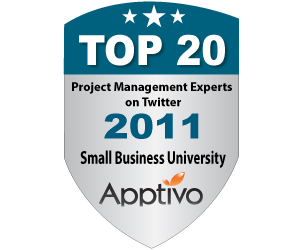As we reflect on the life of former South African president
and Nobel Peace Prize winner Nelson Mandela, we should take a moment to
consider three
powerful lessons from his leadership that are relevant for project managers
today.
Leadership is
behavioral, not positional. Even though he only served as South Africa’s
president for five years, Mandela is an example of how one can lead without
formal authority. Over the 27 years he was imprisoned, he exerted influence,
and over his five-year presidency, he exerted influence. In the decade and a
half following his retirement from politics, Mandela’s influence grew as a
global humanitarian and philanthropist.
The capacity to integrate, motivate, and mobilize others to
bring a common aspiration to life is what leadership is all about. This simple
truth gives hope to the millennial generation that leadership isn’t an activity
relegated to the distant c-suite; good can be done at every stage of one’s
career. It can serve to reignite the passion of the mid-career professional –
somebody is watching, learning from, and emulating your example, regardless of
who recognizes or ignores your contributions.
Choose collaboration
over retaliation. In the face of conflict, many leaders in organizations
develop an instinctive default response – they choose to either collaborate or
retaliate. Retaliating against one’s opponents can be a gratifying primal
reaction, but in the networked global marketplace, it is a short-sighted,
losing strategy. Retaliation deepens divides; collaboration heals them.
Retaliation perpetuates ignorance; collaboration promotes learning and
progress.
Mandela honed his collaborative instinct before becoming
South Africa’s first black president, assembling a multiracial leadership team
to combat apartheid as head of the African National Congress. He knew how to
listen and leverage insights of others. He also understood the power of choosing
to forgive those who have wronged you and seeking reconciliation with those you
have wronged. Research and experience show that the collaboration instinct revolutionizes
markets, enhances organizations, and enriches lives.
Never give up on
seemingly impossible idea. Mandela is often quoted saying “it always seems
impossible until it’s done.” His perseverance in the face of inhumane
persecution shows us that the impossible will remain impossible if men and
women of purpose fail to summon the courage to do what’s right. Accomplishing
anything worth talking about or remembering will involve opposition and
setback, which is why big ideas die in organizations every day.
Cultivating an organization that stands for and embodies
grand ideals is worth fighting for. Growing a team that does the right thing
when nobody is watching is worth fighting for. If Mandela teaches us anything,
it’s to commit our lives and our practice of leadership to pushing for the
seemingly impossible.
About the Author: Amanda Ciccatelli, Social Media Strategist of the Marketing Division at IIR USA, has a background in digital and print journalism, covering a variety of topics in business strategy, marketing, and technology. Amanda is the Editor at Large for several of IIR’s blogs including Next Big Design, Customers 1st, and ProjectWorld and World Congress for Business Analysts, and a regular contributor to Front End of Innovation and The Market Research Event,. She previously worked at Technology Marketing Corporation as a Web Editor where she covered breaking news and feature stories in the technology industry. She can be reached at aciccatelli@iirusa.com. Follow her at @AmandaCicc.









































Share Your Thoughts!